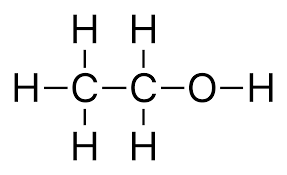Description
Ethanol is highly soluble in water and organic solvents, but poorly soluble in fats and oils. Ethanol itself is a good solvent, which is used in cosmetics, paints and tinctures
[2]. Density of ethanol at 68 °F (20 °C) is 789 g/l. Pure ethanol is neutral (pH ~7). Most alcoholic beverages are more or less acidic.
Ethanol/ethyl alcohol is highly flammable liquid, hygroscopic, and fully miscible in water. Ethanol is incompatible with a large number of chemicals such as strong oxidisi
This page provides supplementary chemical data on ethanol. Except where noted otherwise, data relate to standard ambient temperature and pressure.
Basic Attributes
Molecular Weight:46.06840
Exact Mass:46.07
EC Number:270-649-4
HScode:2207200010
CAS No:64-17-5
Characteristics
PSA:20.23000
XLogP3:-0.00140
Appearance:Ethanol with a small amount of an adulterant added so as to be unfit for use as a beverage.
Density:0.789 g/cm3 @ Temp: 20 °C
Melting Point:-114.1 °C
Boiling Point:78.5 °C
Flash Point:12ºC
Refractive Index:1.3614
Water Solubility:Miscible
Storage Conditions:Store at RT.
Vapor Pressure:Vapour pressure, kPa at 20°C: 5.8
Vapor Density:1.59
Toxicity:LD50 in young, old rats (g/kg): 10.6, 7.06 orally (Wiberg)
Flammability characteristics:Class IB Flammable Liquid: Fl.P. below 73°F and BP at or above 100°F.
Explosive limit:vol% in air: 3.17.7
Odor:Pleasant
Taste:Burning
PKA:15.9(at 25 °C)
Use and Manufacturing
Suitable for use in the precipitation of nucleic acids. It is one of the important basic chemical raw materials. It is widely used in organic synthesis, medicine, pesticide and other industries. It is also an important organic solvent. Used as fuel for self-service hot pot, fuel for field trips, etc. Often used as analytical reagents, but also in the pharmaceutical industry

